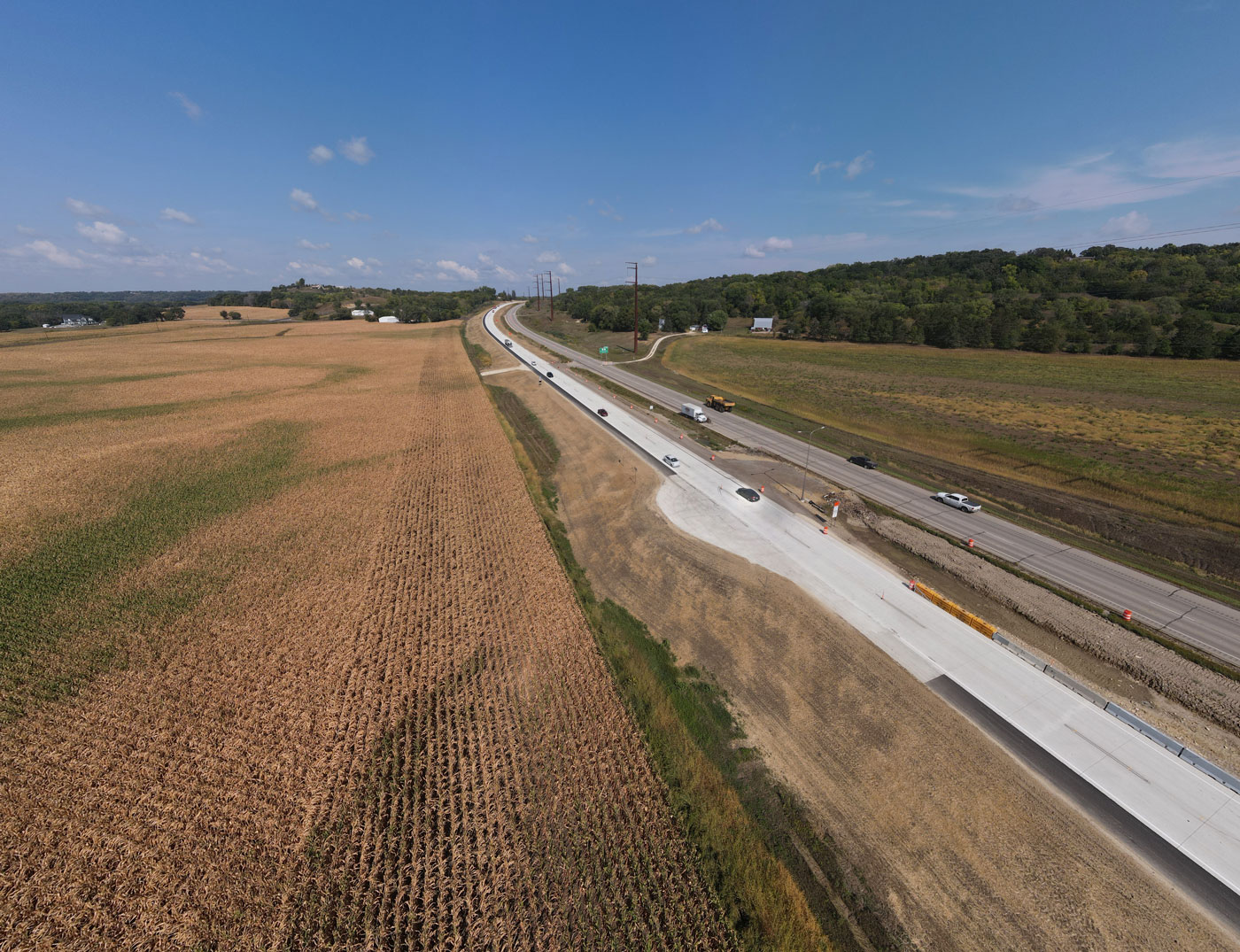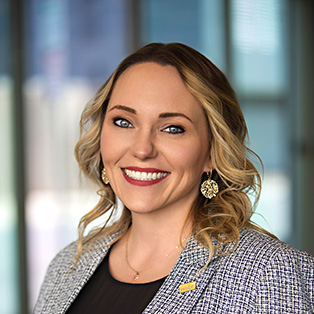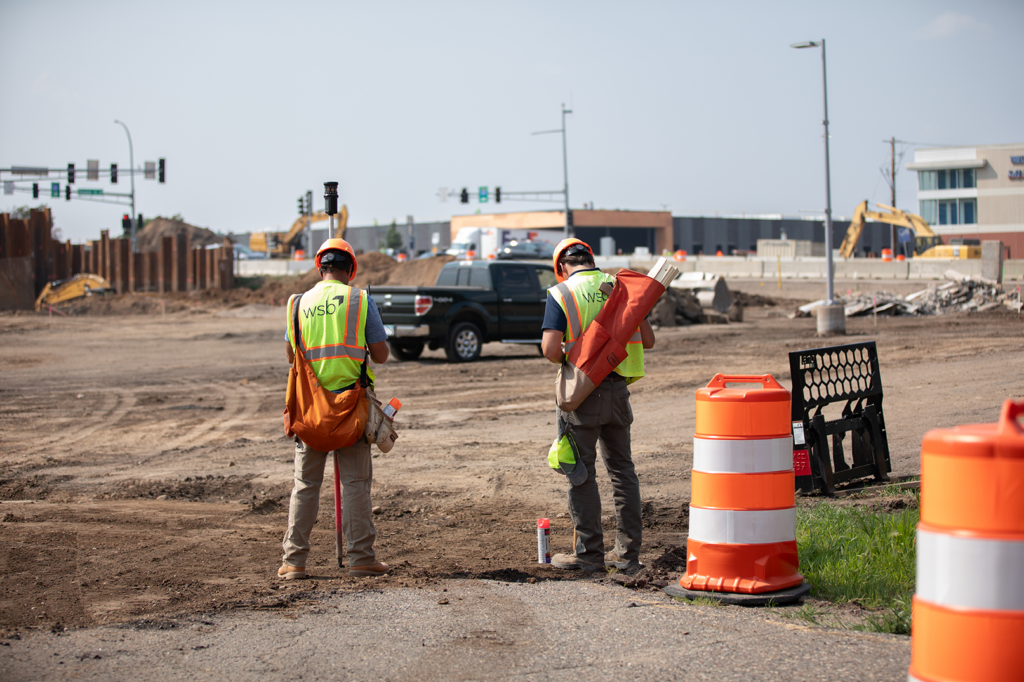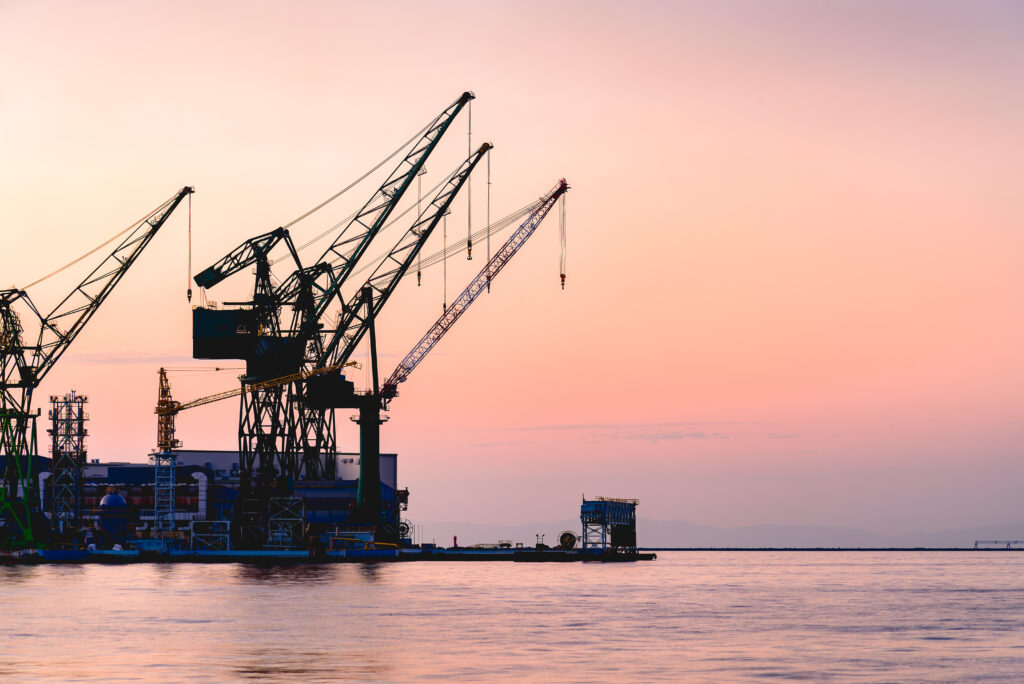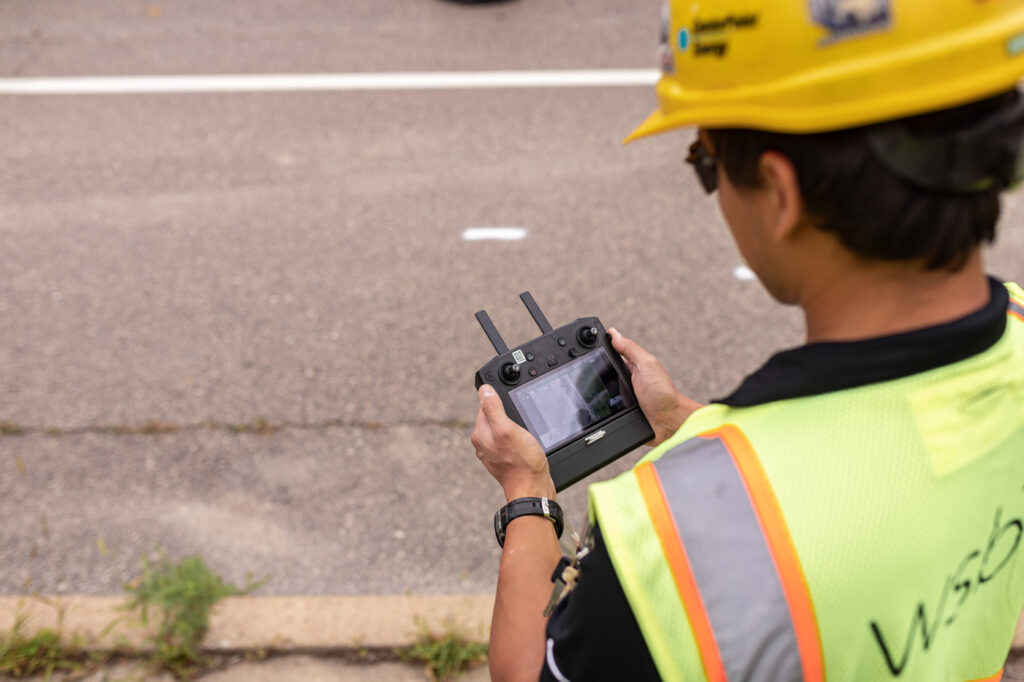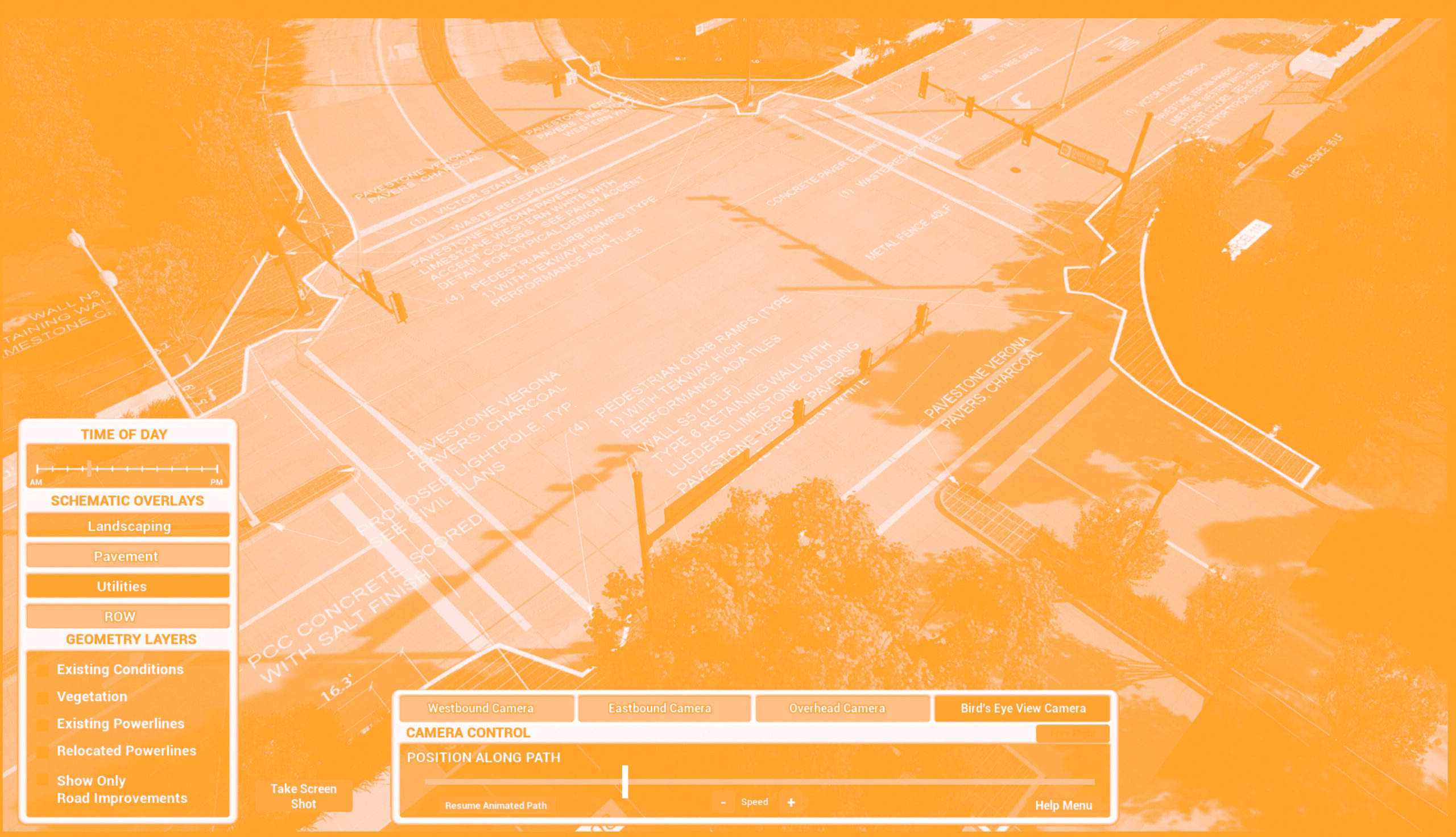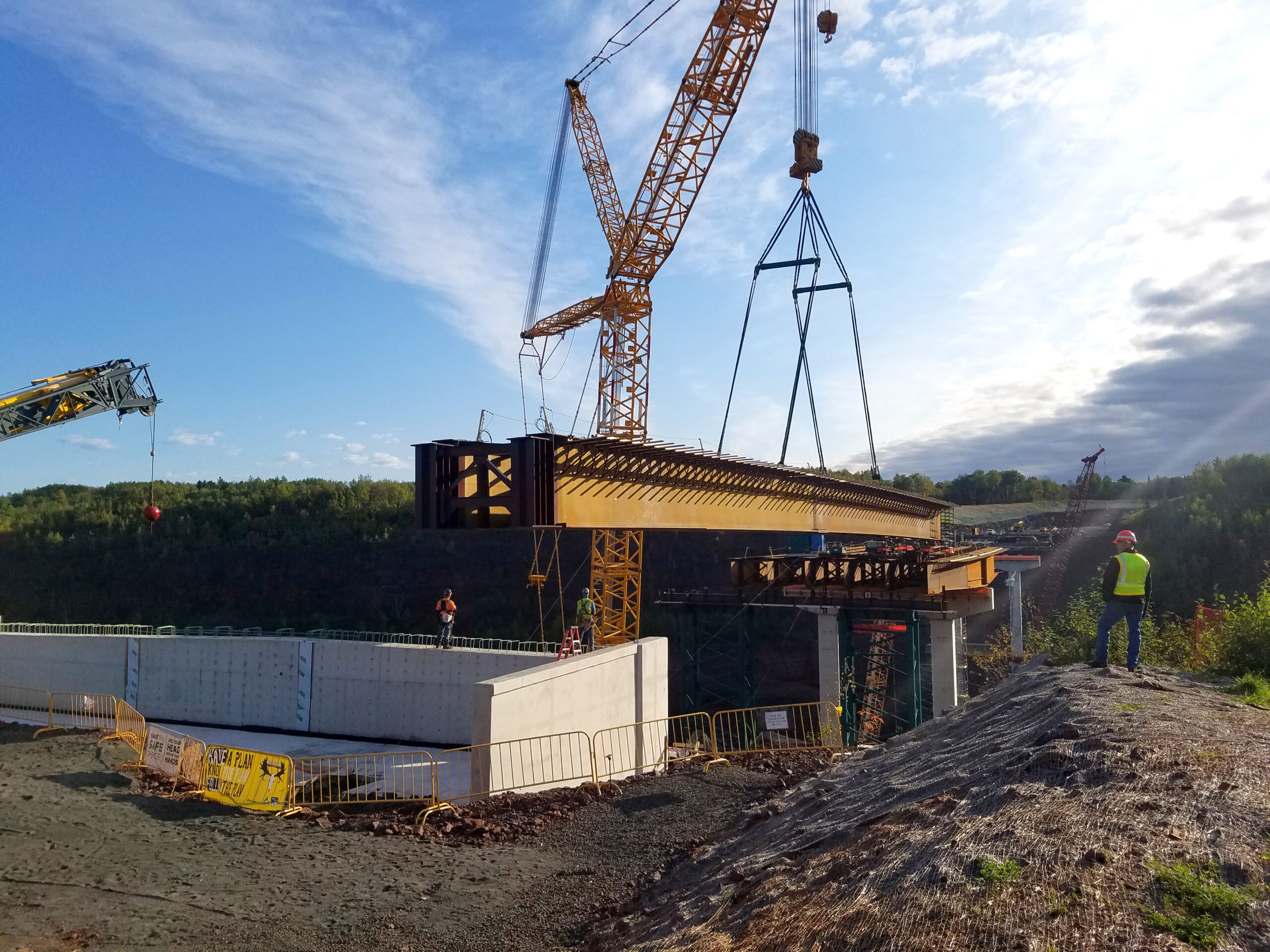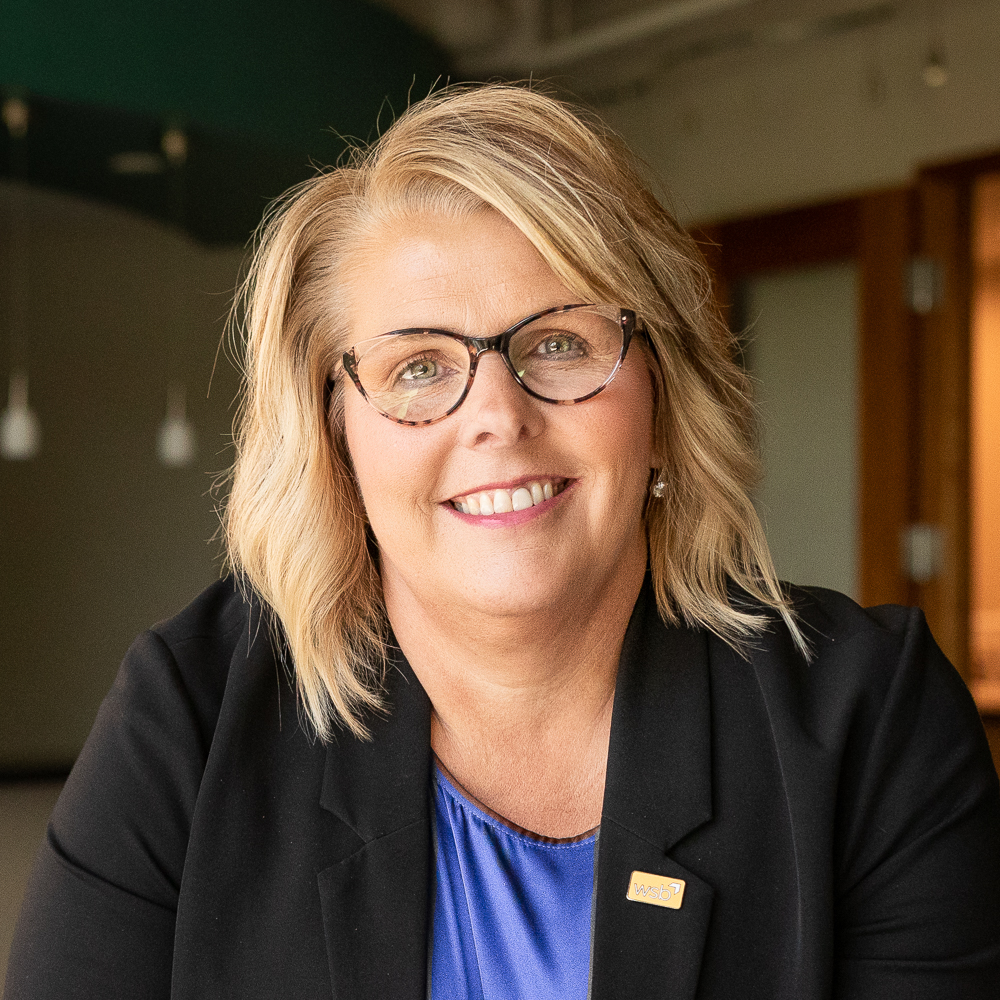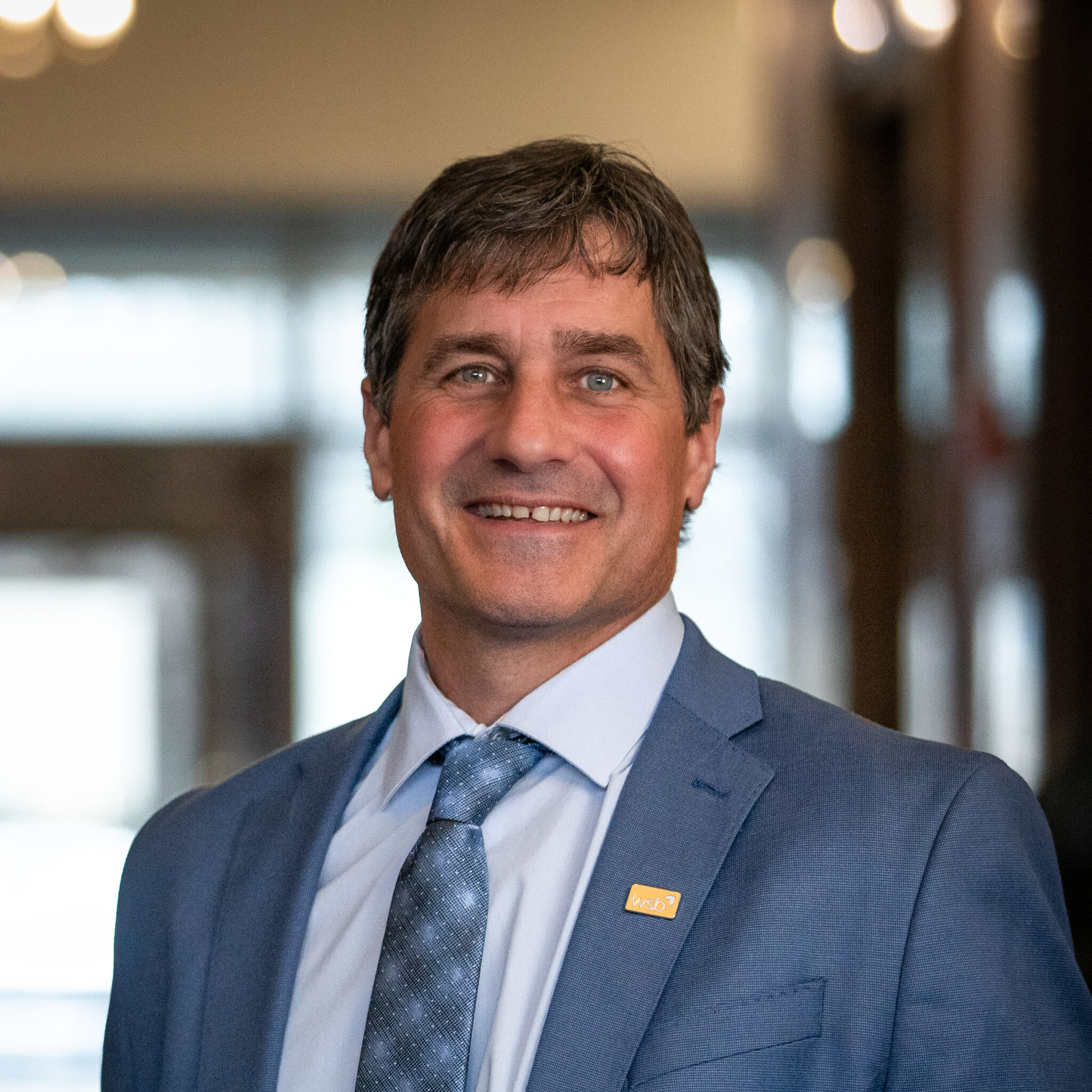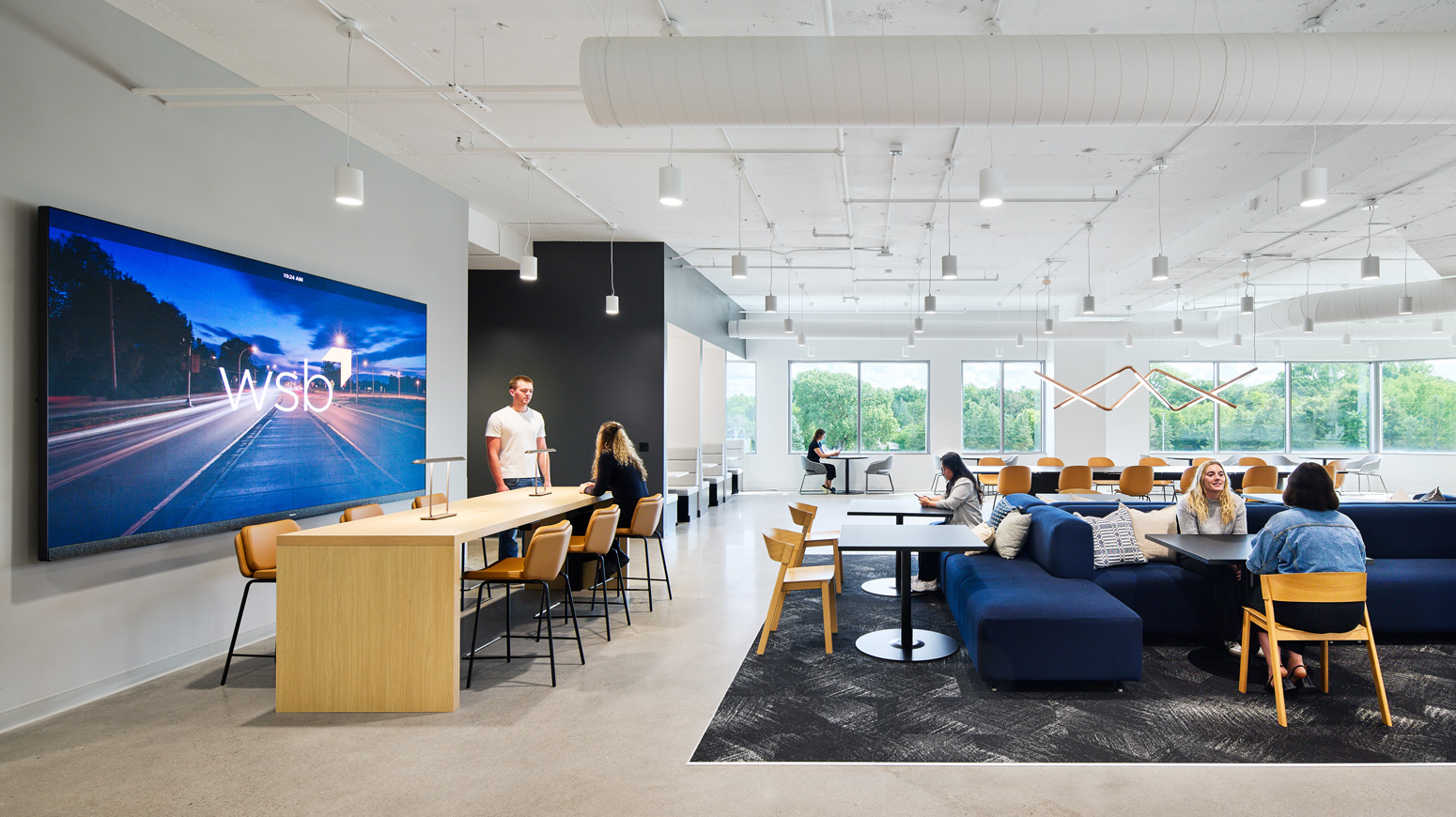July 7, 2025
Kate graduated from the University of St. Thomas in 2023 with a B.S. in Civil Engineering. She is currently pursuing her Professional Engineer (PE) license. As a graduate engineer in the municipal division at WSB, Kate works in design, construction, and city engineering, focusing on reconstruction projects. She collaborates with residents, city staff, and contractors to achieve successful project delivery, including watermain, sanitary sewer, storm sewer, and street design.
When did you join WSB AND WHY?
I joined WSB in the summer of 2022 as a municipal intern and completed one summer in this role. After graduating college, I was offered a full-time position. My initial experience as an intern for cities sparked my curiosity about the consulting world and I wanted to explore that side of the industry. During my time as an intern, I was in the process of discovering where I wanted to be professionally. The environment at WSB, along with the diverse projects I worked on, ultimately led me to accept the full-time position.
HOW HAVE THE WSB VALUES IMPACTED YOUR PROFESSIONAL WORK, AND IS THERE A PARTICULAR VALUE THAT YOU MOST IDENTIFY WITH?
All of the WSB values have impacted me uniquely, but optimism has been particularly influential both professionally and personally. Every project comes with its own challenges, and it’s essential to see it through to the end. I believe all values are interconnected; you can’t have one without the others. While I relate most to optimism, visionary thinking and passion go hand in
hand.
As a graduate engineer, I work with many different people at WSB, and I see the company’s values reflected in all of us. We consistently bring these values to life as we work together to
complete projects.
WHAT WOULD YOU WANT PEOPLE TO KNOW ABOUT WSB?
In the municipal division, we gain valuable field and design experience, striking a good balance between both. Most projects are conducted as a team effort, so you are never alone. Whenever I have questions, I turn to my project manager who always takes the time to walk me through and help me find solutions. Additionally, we have many graduate engineers with varying levels of
experience, all working together. This collaborative environment has had a significant impact on me and is one of the main reasons I continue at WSB. There is a strong community of learning and growth among everyone, all looking to advance their careers.
WHAT HAS BEEN YOUR FAVORITE PROJECT TO WORK ON AT WSB?
Every project is unique, making it difficult to choose just one as a favorite. I’ve had the opportunity to work on various development projects and collaborate with different cities on their city
engineering work. While I don’t have a single favorite project, what I have enjoyed the most across all my projects is getting to know people and building strong relationships with different cities and clients.
HOW DOES WSB’S WORK IMPACT THE COMMUNITIES WE SERVE?
As a construction inspector on a couple of projects, I worked directly with residents in the field. Often, residents approach us to express their excitement about the improvements we’re making whether it’s new pavement, replacing their water service or other enhancements. They share how the changes we are making impact their lives in meaningful ways.
From a city perspective, I understand that they have a long list of items to complete. When we can take on tasks and successfully complete them, we are helping more than we realize.
WHAT ADVICE WOULD YOU GIVE TO YOUNG ADULTS WHO ARE THINKING OF PURSUING ENGINEERING?
Engineering can be a challenging field, especially with the amount of schoolwork and effort required. However, it’s important to remember that in this profession, we make visible impacts on people’s lives, even if we don’t always realize it. While my family members who work as nurses and caretakers see the direct results of their work, as civil engineers, we see the impacts daily
but often indirectly. Even if it’s not always apparent on the surface, your work as an engineer is making a difference in people’s day-to-day lives.
HOW DOES WSB FOSTER A CULTURE OF CONTINOUS LEARNING AND DEVELOPMENT?
I had the opportunity to take on projects I initially didn’t think I could complete. Sometimes your manager or project manager sees your potential before you do. I’ve learned and developed thanks to the supportive community around me, even when I doubted my abilities. Support is crucial, and I know I can count on my manager for guidance. Feedback is essential for learning and development. I often work on something until it’s about 60% complete and then seek feedback from a team member. Actively asking for feedback is important for our careers, and it’s critical.
HOW DOES WSB ENCOURAGE COLLABORATION AND KNOWLEDGE SHARING AMONG TEAM MEMBERS?
By fostering an environment where everyone is open to answering questions, supporting one another, and sharing knowledge across offices. Team members are encouraged to engage with each other, exchange ideas, and gain new insights and perspectives. The friendly and open atmosphere makes it easy to form new connections and collaborate effectively. Additionally,
the culture of continuous learning is reinforced by managers who acknowledge that they don’t have all the answers, but together, the team can work towards finding solutions.
How has the mentorship at WSB impacted your career development?
I believe mentorship is a foundation necessary for success in any job. At WSB, mentorship is prioritized as a key component of professional growth. My mentor, who eventually became my manager, has provided invaluable support in both my career and personal life. They have been there for me even when they weren’t directly involved in the projects, I needed help with.
Throughout my career, I have had the privilege of being mentored by various project managers. These mentors have been instrumental in providing guidance, answering questions and sharing their experiences. Often, our discussions go beyond specific projects, and delve into their career journeys, offering insights into the steps I need to take to achieve my goals.
how does wsb’s culture align with your personal values and career goals?
WSB values align with my personal values and career goals. I am dedicated to seeing projects through and appreciate having a supportive team to rely on. I am passionate about my work because it impacts communities and provides valuable experience. The positive atmosphere at the office fosters a sense of community and collaboration. My goal is to obtain my PE
license, and through project experience and learning from experienced colleagues, I am confident I will achieve it. WSB’s culture of curiosity and continuous learning resonates with
me, as I strive to keep learning and improving. I am always excited to enhance our processes, and as we adapt and grow, I believe it is crucial for career development.
WHAT EXCITES YOU THE MOST ABOUT THE FUTURE OF WSB?
WSB has grown tremendously since I joined, transforming from a mid-size firm to a nationwide presence. We continue to grow with the market, enhancing our services, and improving how we work within the communities we serve.
One of the most exciting aspects is the new talent we continue to develop. I had the privilege of mentoring two individuals during their college years, and now they hold positions at WSB. It’s inspiring to see the next generation of engineers contributing to our success. WSB does a great job of pursuing talent and developing them to be leaders.
